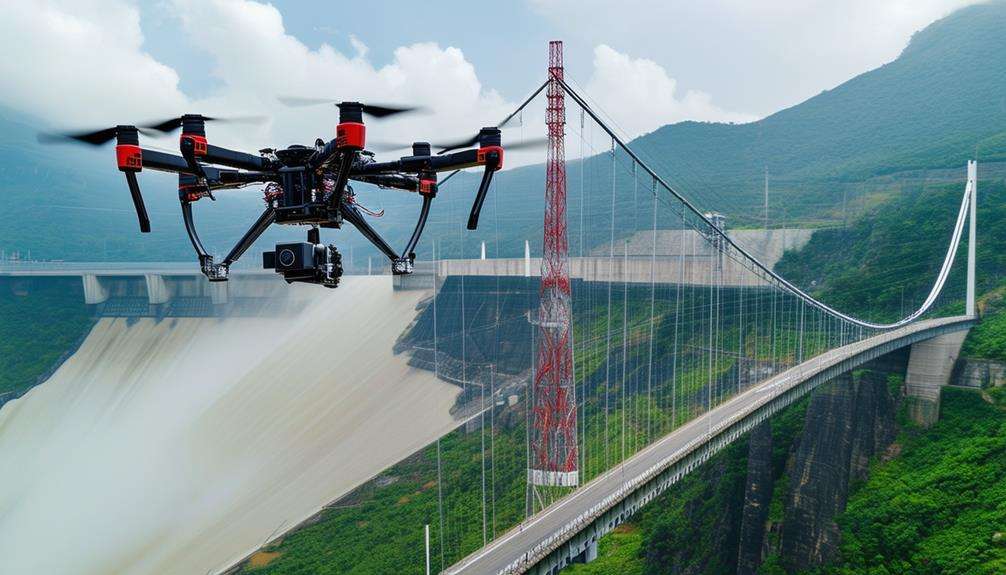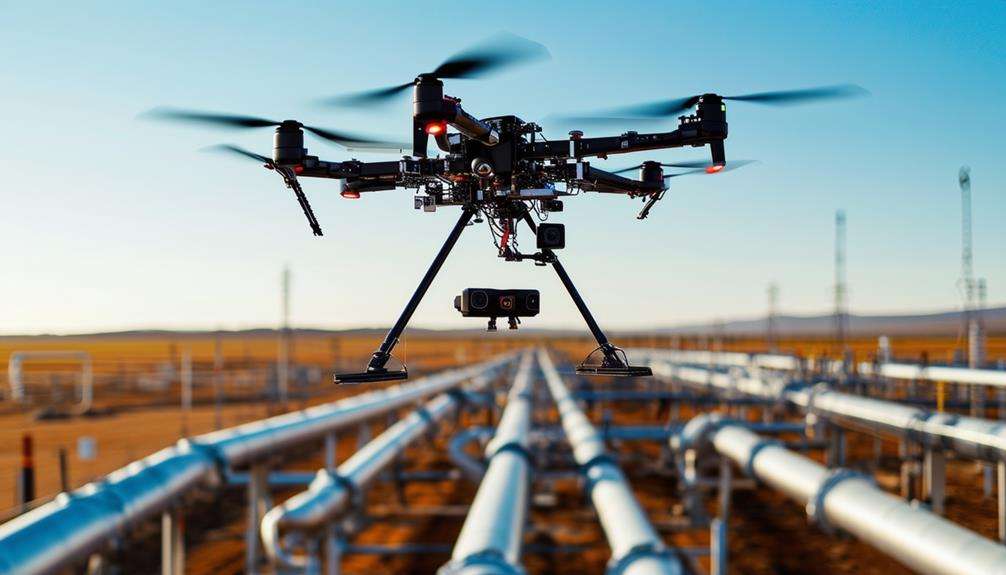The Different Categories of Drones and Their Uses
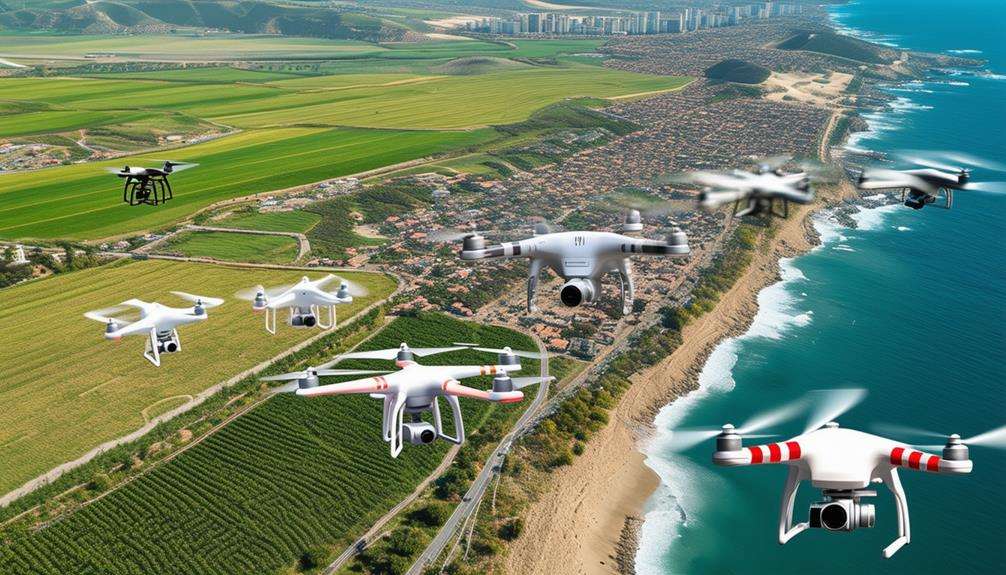
When you think about drones, you might picture a small quadcopter buzzing overhead, but there's much more to these fascinating machines. Drones come in various categories, each with unique capabilities and purposes. Fixed-wing drones are perfect for long-distance missions, while rotary-wing drones excel in precision tasks like aerial photography. Powered-lift drones combine the best features of both fixed-wing and rotary-wing designs, making them ideal for versatile applications in urban settings.
Additionally, there are small hobbyist drones designed for recreational use and large military drones for defense and surveillance. Each type is tailored to meet specific needs, and understanding these can open up a world of possibilities. Curious about how these drones can impact different industries?
Fixed-Wing Drones
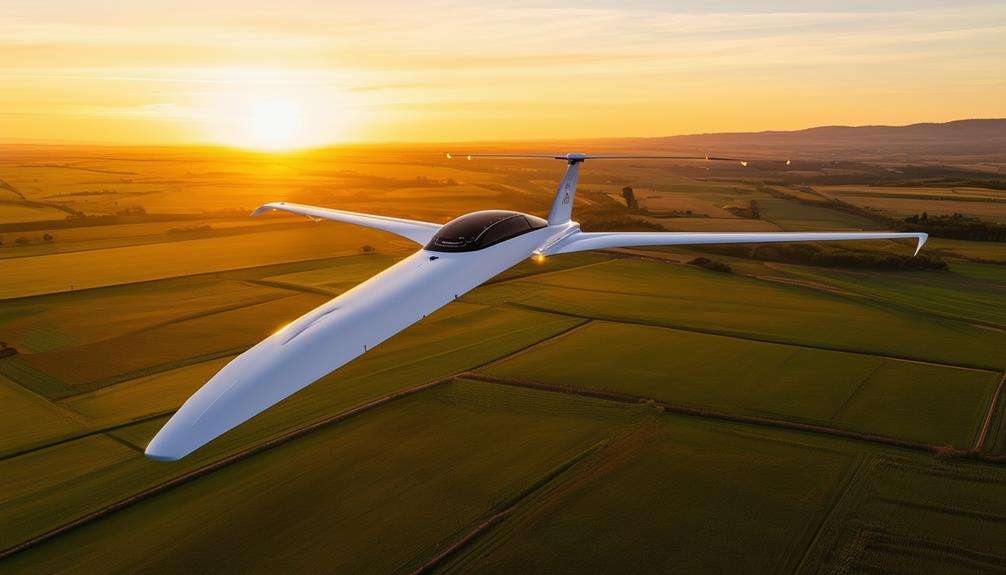
Fixed-wing drones, characterized by their airplane-like rigid wings, are ideal for covering long distances and efficiently mapping large areas. These drones are particularly valuable in industries such as agriculture, inspection, and security due to their energy efficiency and extended flight times. Fixed-wing hybrid VTOL drones enhance this capability by combining vertical takeoff and landing with the endurance of a fixed-wing design, allowing for versatile operation in varied environments without the need for a runway.
For extensive aerial mapping, fixed-wing endurance drones are the optimal choice. Their ability to remain airborne for extended periods ensures stable and reliable data collection over vast areas. The capacity to cover more ground in a single flight makes them indispensable for tasks requiring extensive coverage and endurance. However, it's important to note that these drones may be more costly and often necessitate specialized training for effective operation.
Despite the initial investment, the advantages of stability, efficiency, and long flight times make fixed-wing drones a worthwhile choice. Professionals across various fields depend on these drones for their specialized applications, underscoring their value and reliability.
Rotary-Wing Drones
Rotary-wing drones, including quadcopters and hexacopters, offer unparalleled agility and precision across various applications. These drones utilize multiple rotors for lift and maneuverability, making them remarkably versatile. For aerial photography enthusiasts, rotary-wing drones are the ideal choice, as they can hover steadily, providing stable platforms for capturing stunning aerial shots.
Compact rotary-wing drones are suitable for both indoor and outdoor use. Their small size and intuitive controls allow for easy navigation through tight spaces. These drones can be outfitted with various payloads, such as cameras, sensors, or specialized equipment, to meet diverse needs. Whether you're involved in surveillance, search and rescue missions, or simply enjoying a hobby, these drones offer the flexibility required for different tasks.
The capability to hover and execute agile maneuvers enables the capture of video and images from angles unattainable by other drone types. If you prioritize precision and versatility, rotary-wing drones are an excellent choice. They provide the control and efficiency needed for thorough aerial exploration.
Powered-Lift Drones
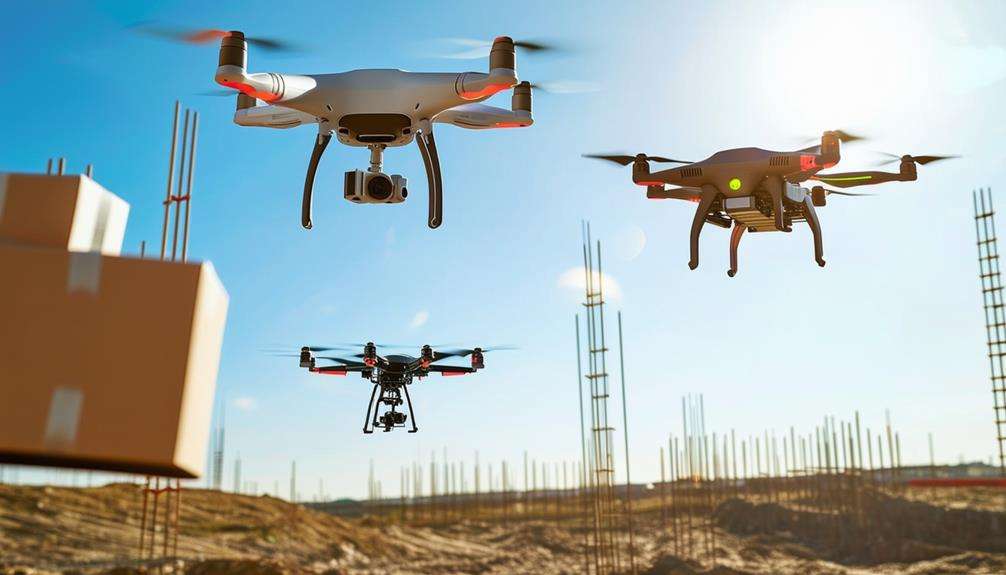
Building on the versatility of rotary-wing drones, powered-lift drones offer an exceptional blend of hovering capability and high-speed efficiency. These innovative drones integrate features of both fixed-wing and rotor-wing designs, delivering unmatched flexibility in flight operations. Configurations include tiltrotors, tiltwings, and drones equipped with dual sets of perpendicular rotors.
Powered-lift drones excel in scenarios requiring both vertical takeoff and landing (VTOL) and efficient forward flight. Imagine a drone that hovers like a helicopter but cruises like an airplane; that's the strength of these advanced machines. This dual capability makes them ideal for a wide range of applications, such as reconnaissance, surveillance, and urban air mobility.
With the rise of urban air mobility, powered-lift drones are becoming increasingly significant. They can navigate crowded urban environments, land on small pads or rooftops, and then transition swiftly to high-speed travel. These drones not only extend flight times but also enhance mission capabilities, making them indispensable for modern aerial tasks. Incorporating powered-lift technology into your drone fleet means investing in a versatile tool that adapts to various mission profiles, ensuring efficient and effective task completion.
Small Drones
Small drones, weighing up to 1 kg, are ideal for hobbyists and beginners due to their affordability and user-friendly nature. Their lightweight design makes them highly portable, allowing you to easily carry them for recreational activities. For those new to drones, small drones offer an accessible entry point into the world of aerial photography without a significant investment.
Equipped with built-in cameras, these drones can capture impressive aerial shots and videos, even if their resolution doesn't match professional models. They're perfect for obtaining unique perspectives that are impossible from the ground, whether documenting a family outing or capturing a bird's-eye view of your neighborhood.
However, it's important to note that small drones have some limitations. Their flight times are typically short, ranging from 10 to 30 minutes per charge. This necessitates careful planning for your aerial photography sessions. Despite these constraints, small drones serve as an excellent introduction to drone piloting and aerial photography, offering a balance of ease of use and functionality.
Medium Drones
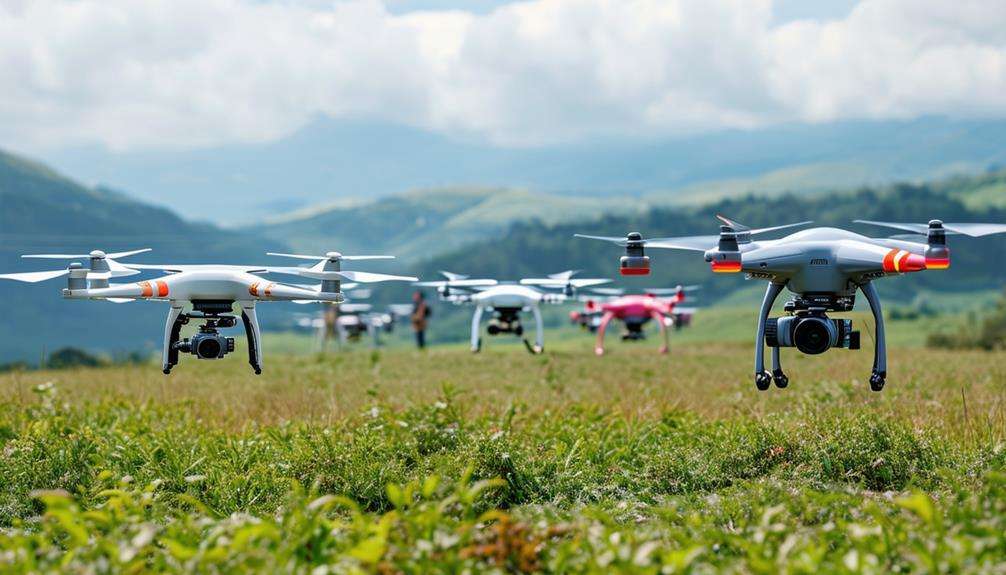
Medium drones are highly versatile across various professional fields. With enhanced payload capacities and longer flight ranges, they're well-suited for tasks requiring greater capabilities. Whether in agriculture, surveying, or security, medium drones offer the advanced features necessary for efficient and detailed data collection.
Versatile Applications
Medium drones, weighing up to 200kg, excel in professional applications like aerial mapping, surveillance, and infrastructure inspection, making them indispensable across various industries. These drones conduct detailed aerial surveys, provide precise data for construction projects, and monitor vast agricultural fields to ensure optimal crop health. Their capacity to handle heavier payloads allows them to be equipped with advanced sensors and cameras, delivering high-quality data and imagery.
In environmental conservation, medium drones play a critical role by monitoring wildlife, tracking ecosystem changes, and assessing the health of forests and water bodies. For urban planning or infrastructure maintenance, these drones efficiently inspect bridges, pipelines, and other critical structures, reducing the need for risky manual inspections.
Medium drones also offer longer flight times and increased endurance compared to smaller drones, enabling extended missions and coverage of larger areas without frequent interruptions. Their reliability in commercial operations makes them a preferred choice for consistent and accurate aerial data collection. Whether your field is agriculture, construction, or environmental science, medium drones provide the versatility and professional-grade capabilities required.
Enhanced Payload Capacity
Medium drones, with their enhanced payload capacity, can carry advanced sensors and equipment to execute complex tasks with precision and efficiency. Boasting a weight capacity of up to 200kg, these drones are well-suited for professional applications requiring substantial payloads. Whether for aerial mapping, infrastructure inspection, or wildlife monitoring, medium drones offer the reliability and capability needed.
A key feature of medium drones is their extended flight time, enabling more extensive area coverage in a single flight, thus making data collection more efficient and comprehensive. Their improved stability ensures the accuracy and reliability of the gathered data, which is crucial for industries such as agriculture, construction, and environmental conservation.
In agriculture, these drones can be equipped with specialized sensors to monitor crop health and optimize yields. In construction, they're invaluable for detailed site inspections and progress monitoring. Environmental scientists utilize them for wildlife surveys and habitat assessments.
The versatility and substantial payload capacity of medium drones make them indispensable tools for a vast range of commercial and industrial operations. Leveraging their capabilities can lead to greater efficiency and precision in various fields.
Extended Flight Range
How can medium drones, with an impressive flight range of up to 400 miles, revolutionize tasks like aerial mapping and long-range surveillance? The key lies in their extended flight range, which enables efficient coverage of vast areas. These drones can carry payloads up to 200kg, making them ideal for professional applications requiring substantial equipment.
Consider an aerial survey of a large agricultural field. Medium drones, equipped with high-resolution cameras and GPS navigation, can provide detailed and accurate data without frequent recharging or refueling.
Their extended endurance reduces logistical challenges, allowing more focus on data collection. In industries such as infrastructure inspection and wildlife conservation, these drones' payload capabilities enable them to carry advanced sensors and equipment.
This allows for thorough inspections and extensive wildlife monitoring. The combination of extended flight range and advanced technology ensures precise, reliable results. Medium drones are transforming the approach to large-scale projects, enhancing efficiency and effectiveness in tasks like surveying, mapping, and surveillance. Their extended flight range, payload capacity, and GPS navigation make them indispensable tools in modern professional applications.
Large Drones
Large drones, distinguished by their expansive wingspans and robust builds, are engineered for carrying heavy payloads and enduring long-duration flights. These advanced machines, often boasting wingspans over 6 feet and weighing several hundred pounds, are pivotal in military surveillance. They come equipped with high-resolution cameras, thermal imaging systems, radar, and long-range communication capabilities, making them essential for reconnaissance missions and border patrol.
Large drones can perform several critical functions:
- Military Surveillance: They excel in monitoring vast areas, providing real-time data and intelligence crucial for strategic operations.
- Cargo Transport: Their heavy payload capacity enables the transportation of essential supplies to remote or hard-to-reach locations, ensuring timely deliveries.
- Aerial Mapping: These drones can cover extensive terrains, capturing detailed maps and geographic information for industrial and environmental applications.
Leading companies like General Atomics, Northrop Grumman, and Lockheed Martin are at the forefront of developing these sophisticated aircraft. Their ability to fly at high altitudes and endure harsh weather conditions makes them ideal for both military and industrial uses.
Photography Drones
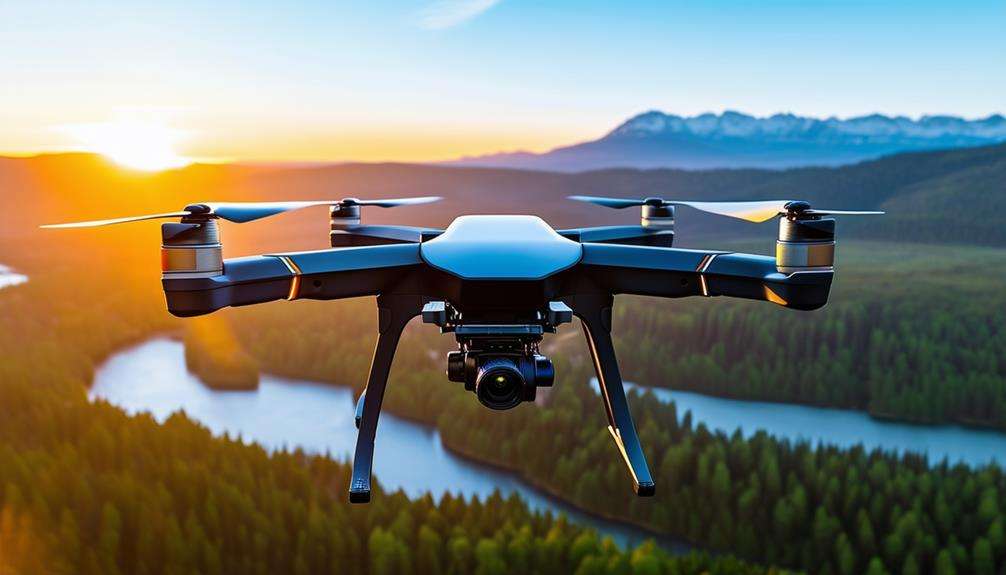
Photography drones offer high-resolution imaging capabilities, ideal for capturing stunning aerial shots. These drones excel in aerial videography, enabling you to create dynamic scenes from unique perspectives. Imagine transforming ordinary landscapes into extraordinary visuals with breathtaking scenic captures.
High-Resolution Imaging
Photography drones are transforming the way professionals and hobbyists capture aerial imagery, offering a revolutionary approach to visual storytelling. Equipped with high-resolution imaging capabilities, these drones provide the ability to capture intricate details from unique sky-high perspectives that are challenging to achieve from the ground.
In the filmmaking and photography industries, photography drones have gained immense popularity due to their ability to deliver stunning aerial shots that enhance cinematography. Advanced stabilization technology ensures smooth, shake-free footage, which is crucial for producing high-quality visual content. When using photography drones, you can expect:
- Heightened Perspectives: Gain access to angles for capturing landscapes, cityscapes, and events that are unattainable with traditional cameras.
- Creative Freedom: Experiment with dynamic shots and angles, adding a professional and cinematic touch to your visual storytelling.
- Detailed Imagery: High-resolution cameras capture every shot with rich details, making your photos and videos stand out.
Whether you're a professional filmmaker or a photography enthusiast, photography drones offer tools that enhance your craft. Their stable flight and precise control allow you to concentrate on capturing the perfect shot without technical concerns.
Aerial Videography Techniques
Mastering aerial videography with photography drones can significantly elevate the quality of your visual content. Utilizing drones equipped with high-resolution cameras enables you to capture stunning aerial imagery and videos that truly stand out. A crucial feature for enhancing your footage is gimbal stabilization, which ensures smooth and stable shots even when the drone is in motion or facing windy conditions.
To maximize the potential of your photography drones, explore the advanced settings they offer. Manual control over exposure, focus, and white balance allows you to adapt to varying lighting conditions and achieve your desired cinematic effects. For instance, adjusting exposure can help you capture the perfect sunset, while fine-tuning focus ensures your subject remains sharp.
Employing the right aerial videography techniques can result in dynamic shots that captivate viewers. Popular cinematic shots include aerial panoramas offering sweeping views, tracking shots that follow a moving subject, and reveal shots that gradually expose a scene.
Scenic Landscape Captures
Utilizing the advanced capabilities of photography drones, you can capture stunning aerial images of scenic landscapes from unique and captivating perspectives. These drones come equipped with high-resolution cameras, enabling you to document the world from vantage points that were previously inaccessible. Whether you're a professional photographer or a dedicated hobbyist, aerial photography drones provide the stability and precision necessary to capture breathtaking shots of nature's splendor.
Consider the following scenes:
- Majestic Mountains: Drone shots of towering, snow-covered peaks emphasize the rugged beauty of mountainous terrains.
- Lush Forests: Aerial images reveal the dense canopy of ancient forests, showcasing patterns and textures invisible from the ground.
- Expansive Oceans: Capturing the vastness of the ocean, with waves crashing against the shore and an endless horizon, highlights the ocean's grandeur.
Photography drones have transformed how scenic landscapes are documented and shared. They offer a fresh perspective, enabling you to create visually compelling content that resonates with viewers. Whether you're capturing the tranquility of a serene lake or the vibrant hues of autumn foliage, these drones add a new dimension to visual storytelling. Their capability to capture detailed aerial images allows you to share the world's beauty in a manner that's both immersive and awe-inspiring.
Racing Drones
Racing drones, specifically designed for speed and agility, provide an exhilarating experience for competitive pilots. These nimble machines employ FPV (First-Person View) technology, allowing pilots to see exactly what the drone sees in real-time through goggles. This immersive perspective makes navigating intricate racing courses a thrilling challenge. Racing drones are lightweight and highly maneuverable, ideal for darting through tight spaces and around obstacles at high speeds.
Popular models like the Walkera F210 3D and EMAX Tinyhawk Freestyle BNF quadcopter are staples in the racing community. These drones are engineered for both durability and performance, ensuring they can withstand the rigors of intense competition. As a pilot, you'll appreciate the fine-tuned controls and responsive handling these drones offer.
Drone racing leagues, such as the Drone Racing League (DRL) and MultiGP, have transformed this high-octane hobby into a global sport. These leagues host events where you can compete against other enthusiasts, pushing the limits of your skills and your drone's capabilities. With the rise of racing drones, there's a growing community of passionate pilots eager to share tips, tricks, and the excitement of drone racing.
Delivery Drones
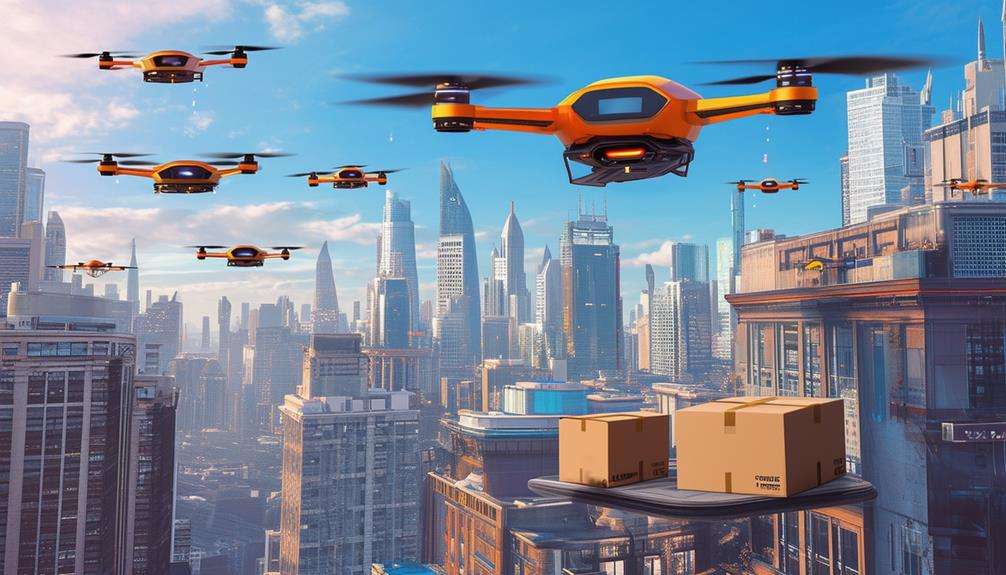
Delivery drones are designed to transport goods quickly and efficiently to your doorstep, revolutionizing the logistics industry with rapid and cost-effective solutions for package delivery. Companies like Amazon Prime Air are leading the charge, experimenting with drones to guarantee faster and more reliable service.
These unmanned aerial vehicles are equipped with advanced GPS technology for precise navigation, allowing them to fly at varying altitudes depending on the delivery destination. They can carry packages weighing up to several pounds and travel several miles in a single trip.
Imagine scenarios like:
- An Amazon Prime Air drone gliding through the sky, easily navigating urban landscapes.
- A small package being gently lowered onto your porch, arriving just in time for your next meeting.
- A fleet of delivery drones operating in synchronization, ensuring efficient and timely deliveries across the city.
Delivery drones not only offer speed but also promise to reduce delivery costs and minimize human error. As technology advances, expect these drones to become an integral part of daily life, transforming how you receive goods and packages.
Military Drones
Military drones play a crucial role in modern warfare by conducting surveillance and reconnaissance missions, offering real-time intelligence without risking human lives. These drones are also equipped for combat, capable of executing precision strikes on enemy targets. Advanced technologies enable drones to assist countries such as the US, China, and Israel in maintaining a strategic advantage in contemporary conflicts.
Surveillance and Reconnaissance Missions
Military drones play a crucial role in surveillance and reconnaissance missions, gathering critical intelligence with exceptional precision. Equipped with high-resolution cameras and infrared sensors, these drones capture real-time data from the battlefield, providing invaluable insights without risking human lives. By flying over hostile environments and combat zones, they offer a comprehensive view that enhances situational awareness and informs strategic decision-making.
The benefits of military drones in modern warfare include:
- Identifying Potential Threats: Advanced sensors enable drones to detect enemy positions, equipment, and movements, allowing for proactive threat mitigation.
- Tracking Movements: Drones can monitor enemy force movements continuously, offering real-time updates that support informed tactical decisions.
- Supporting Operations: Real-time intelligence from drones aids in planning and executing military operations, thereby reducing risks to ground troops.
Incorporating these technologies into military strategies provides a significant tactical advantage. The precision and reliability of military drones ensure superior performance in surveillance and reconnaissance missions, which is essential for maintaining security and achieving mission success.
Combat and Strike Operations
Military drones play a crucial role in executing precision combat and strike operations, building on their capabilities in surveillance and reconnaissance. These advanced unmanned aerial vehicles (UAVs) are equipped with cutting-edge sensors, cameras, and weaponry, enabling them to undertake missions in hostile environments without endangering human lives. Their capacity to operate for extended periods over enemy territory provides a significant strategic advantage.
Notable examples of military drones include the MQ-9 Reaper, the RQ-4 Global Hawk, and the MQ-1 Predator, known for their robust surveillance and strike capabilities. For instance, the MQ-9 Reaper excels in executing precision strikes with its advanced targeting systems and substantial payload capacity, making it an invaluable asset in combat operations.
Military drones enhance modern warfare by offering real-time intelligence, precision strikes, and improved situational awareness. They provide commanders with critical data, facilitating informed decision-making on the battlefield.
Conclusion
Exploring the diverse categories of drones reveals how each type serves a distinct purpose.
- Fixed-wing drones excel in long-distance travel, while rotary-wing drones are known for their agility.
- Powered-lift drones are paving the way for urban air mobility, and small to medium drones meet the needs of both hobbyists and professionals.
- Photography and racing drones offer creative and competitive opportunities, while delivery drones are revolutionizing logistics.
- Military drones, on the other hand, play crucial roles in modern defense strategies.
Embrace these innovations—they are transforming our world.


